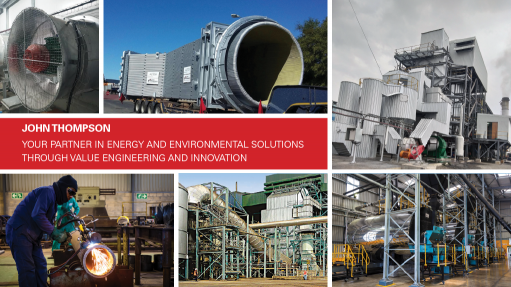DoE to approach small power producers for REIPPPP before year-end

Department of Energy deputy director-general of energy for programmes and projects Dr Wolsey Barnard discusses the progress made with the Renewable Energy Independent Power Producer Procurement Programme. Camerawork: Nicholas Boyd; Editing: Darlene Creamer; Recorded: 09.04.2013
The Department of Energy (DoE) will, before the end of this year, advertise for small power producers, with projects under 5 MW, to participate in its small-generator programme under the Renewable Energy Independent Power Producer Procurement Programme (REIPPPP), DoE deputy director-general of energy for programmes and projects Dr Wolsey Barnard said on Tuesday.
Speaking at the Power & Electricity World Africa conference, in Sandton, on behalf of Energy Minister Dipuo Peters, he noted that the small-generator programme was designed to stimulate participation of small and emerging project developers.
Further, he reiterated that the second bid window of the REIPPPP, which represents about 1 200 MW of renewable-energy capacity and an estimated investment value of R28-billion, would reach financial close at the end of this month.
Barnard noted that the third and last window, which totalled about 1 000 MW of capacity, was also still open for bidding. This window would include a concentrating solar power allocation and was expected to close in August.
He said good progress had been made with most of the successful bidders in the first bid window. In January, construction started on most of the 28 renewable-energy projects, which would reach a total capital cost of R47-billion.
Meanwhile, Barnard pointed out that the DoE’s solar water heater (SWH) programme had been fairly successful in increasing the uptake of SWHs in the domestic sector; however, the department remained concerned that the penetration in the high-consumption electricity market had been lacklustre.
He attributed this to the high capital cost of installing high-pressure SWH systems.
The DoE’s SWH programme was aimed at the installation of one-million units between 2009 and 2014. With the first phase complete, the department was currently in the process of finalising contracts for the second phase to install the remaining 650 000 units, with a localisation target for tanks and auxiliary equipment of 70%.
CROSS-BORDER PARTNERSHIPS
Barnard further pointed out that the department would further its engagements with South Africa’s Southern African Development Community (SADC) counterparts to strengthen the Southern African Power Pool.
“We will also intensify our efforts aimed at the development of an Integrated Resources Plan for the [SADC] region,” Barnard said.
His statement came on the back of the signing of a memorandum of understanding between South Africa and the Democratic Republic of Congo in working towards sustainable African partnerships to develop strategies for low-carbon economies and interconnected energy systems in the region.
Further, a skills shortage was also plaguing South Africa and the rest of the continent, particularly in the energy sector, and the engineering and science fields.
“We cannot successfully implement multibillion-rand projects in the absence of a trained, stable and skilled labour pool,” Barnard said, urging the private sector to collaborate with government in finding amicable solutions to deal with the skills challenge.
He suggested that such solutions could include offering scholarships for undergraduate and postgraduate energy-related studies, as well as international exchange programmes.
“The entire energy sector is in dire need of specialised skills. The work of the DoE, Department of Higher Education and Training, the sector education and training autorities and industry role-players needs to be accelerated.”
Barnard added that there was a great need to unlock entrepreneurship opportunities in the energy sector and that the sustainability of such ventures was largely reliant on mentoring and coaching provided by experts in the sector.
OPPORTUNITIES
Meanwhile, Eskom senior integrated demand management GM Andrew Etzinger told delegates that the global power shortage and the diversification of power generation sources away from carbon-based power posed great opportunities.
The State-owned utility currently produced more than 50% of South Africa’s carbon dioxide emissions and, if all went according to plan, the Integrated Resources Plan 2010, which focuses on renewable-energy sources and nuclear up to 2030, would enable a 34% reduction in the country’s carbon emissions.
With a strong focus on renewables, Eskom’s generation capacity expansion to 2018 would add an additional 11 360 MW of generation capacity.
“Last year, we granted 700 independent power producers [IPPs] access to our grid…we have set up a ‘one-stop-shop’ for IPPs to get access to our grid,” Etzinger noted.
He said energy efficiency could serve as a driving force behind economic development, job creation and competitiveness in South Africa.
In South Africa, nine of the thirteen industrial sectors are more energy intensive than their peers elsewhere, which created good opportunity for increased efficiency and new technologies.
At household level, there also existed opportunity for improved energy efficiency. However, Eskom had, through its demand-side management (DSM) programme achieved good results since the inception of the initiative in 2004, with 3 400 MW having been saved.
The programme entails Eskom installing power-saving light bulbs and showerheads, as well as geyser- and swimming pool pump timers. Last year, the utility installed these devices in 700 000 households.
“We are finalising the results [of the savings made under the DSM programme] for this financial year and 550 MW has been saved [provisionally] through our DSM programme,” he told delegates.
Meanwhile, by 2030, the world was anticipated to require 50% more food, 30% more water and 40% more energy.
He noted that renewable energy, on its own, would not be able to service the power requirements of the future, adding that this indicated the need to foster an energy efficient lifestyle among consumers and generations to come. Similarly, more attention would have to be afforded to energy efficiency in the planning of cities and infrastructure going forward.
Comments
Press Office
Announcements
What's On
Subscribe to improve your user experience...
Option 1 (equivalent of R125 a month):
Receive a weekly copy of Creamer Media's Engineering News & Mining Weekly magazine
(print copy for those in South Africa and e-magazine for those outside of South Africa)
Receive daily email newsletters
Access to full search results
Access archive of magazine back copies
Access to Projects in Progress
Access to ONE Research Report of your choice in PDF format
Option 2 (equivalent of R375 a month):
All benefits from Option 1
PLUS
Access to Creamer Media's Research Channel Africa for ALL Research Reports, in PDF format, on various industrial and mining sectors
including Electricity; Water; Energy Transition; Hydrogen; Roads, Rail and Ports; Coal; Gold; Platinum; Battery Metals; etc.
Already a subscriber?
Forgotten your password?
Receive weekly copy of Creamer Media's Engineering News & Mining Weekly magazine (print copy for those in South Africa and e-magazine for those outside of South Africa)
➕
Recieve daily email newsletters
➕
Access to full search results
➕
Access archive of magazine back copies
➕
Access to Projects in Progress
➕
Access to ONE Research Report of your choice in PDF format
RESEARCH CHANNEL AFRICA
R4500 (equivalent of R375 a month)
SUBSCRIBEAll benefits from Option 1
➕
Access to Creamer Media's Research Channel Africa for ALL Research Reports on various industrial and mining sectors, in PDF format, including on:
Electricity
➕
Water
➕
Energy Transition
➕
Hydrogen
➕
Roads, Rail and Ports
➕
Coal
➕
Gold
➕
Platinum
➕
Battery Metals
➕
etc.
Receive all benefits from Option 1 or Option 2 delivered to numerous people at your company
➕
Multiple User names and Passwords for simultaneous log-ins
➕
Intranet integration access to all in your organisation



















